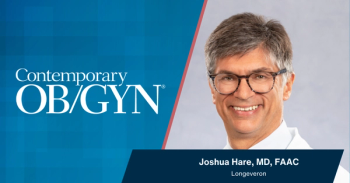
FDA report a disservice to fibroids patients
The U.S. Food and Drug Administration (FDA) has done women a disservice by incompletely examining the evidence for risk and benefits associated with morcellation for women undergoing surgery for suspected fibroids. Of note, within days of the FDA report, the Agency for Healthcare Quality and Research (AHRQ) of the US Department of Health and Human Services published a more rigorous and complete analysis of available data with entirely different results and conclusions. Thirty-six signees recommend that Contemporary OB/GYN’s readers review the AHRQ findings and decide which report serves women best.
The U.S. Food and Drug Administration (FDA) has done women a disservice by incompletely examining the evidence for risk and benefits associated with morcellation for women undergoing surgery for suspected fibroids. The FDA’s recent analysis of data, as we note below, is surprising.1 Of note, within days of the FDA report, the Agency for Healthcare Quality and Research (AHRQ) of the US Department of Health and Human Services published a more rigorous and complete analysis of available data with entirely different results and conclusions.2
The original FDA report relied upon 9 studies and used an outmoded method of analysis to determine a rate of leiomyosarcoma of 1 in 498 fibroid surgeries.3 Following the original FDA advisory in 2014, a rigorous meta-analysis (Pritts, et al) reviewed 5,000 candidate studies and found 133 studies that met criteria for inclusion: patients having surgery for presumed fibroids with full reporting of pathologic findings in all patients. A Bayesian statistical model was used that allowed weighting of each study according to its size and degree of statistical heterogeneity. This analysis showed a prevalence rate of 1 leiomyosarcoma (LMS) in 1,700 women having surgery for presumed fibroids for the 70 retrospective datasets, 1 in 8,300 for the 64 prospectively collected datasets and an overall prevalence rate of 1 in 2,000 surgeries. Despite the fact that 7 of the 32 “leiomyosarcomas” analyzed would not be classified as LMS based on current WHO criteria, the original diagnoses of LMS were used in the calculations, so the actual risk was likely lower.
In their “update” of the literature, the FDA failed to include the 124 of the 133 studies analyzed by Pritts, ignored all fibroid studies that did not have detection of LMS as a central purpose, limited their inclusion to English-language papers, included multiple studies from administrative databases known to be highly inaccurate in coding of diagnoses and treatments and, once again, utilized an overly simplistic analytic approach to evaluate quite complex data.4
In contrast, the AHRQ analysis included all studies of women having surgery for presumed fibroids and included an additional 14 studies published after the Pritts report, encompassing 92,082 total surgeries. AHRQ statisticians validated and employed the Bayesian statistical methodology of the Pritts report and calculated an estimated prevalence of 1 LMS for every 1429 cases of surgery for presumed fibroids among all studies and a rate less than 1 in 4000 derived from more reliable prospective databases.
The AHRQ report also analyzed data for women who had an occult uterine sarcoma and for whom the method of removal of the specimens and the patients’ survival time could be determined. Sixteen such studies included 196 women and AHRQ found no statistically significant difference in 5-year survival rates between women having power morcellation, scalpel morcellation or no morcellation. AHRQ concluded that “uterine sarcoma has high mortality and the fact or method of morcellation is not associated with overall lethality of the disease.”
We consider the publication of the FDA report to be a disservice to women with fibroids by incompletely examining the evidence for risk and benefits associated with morcellation. We strongly recommend that Contemporary OB/GYN’s readers review the AHRQ findings and decide which report serves women best.
In Response:
The editorial staff of Contemporary OB/GYN would like to point out that our piece on the FDA report was presented as news and not as an opinion about the federal commentary. Nevertheless, we appreciate the feedback from Dr. Parker and the signatories of this letter.
REFERENCES
1. US Food and Drug Administration. FDA Updated Assessment of The Use of Laparoscopic Power Morcellators to Treat Uterine Fibroids December 2017. Available at https://www.fda.gov/downloads/MedicalDevices/ProductsandMedicalProcedures/SurgeryandLifeSupport/UCM584539.pdf
2. Agency for Healthcare Research and Quality. Management of Uterine Fibroids. Systematic review. December 14, 2017.Available at https://www.effectivehealthcare.ahrq.gov/topics/uterine-fibroids/research-2017
3. Pritts EA, Vanness DJ, Berek JS, et al. The prevalence of occult leiomyosarcoma at surgery for presumed uterine fibroids: a meta-analysis. Gynecol Surg 2015;12:165-177.
4. Grimes DA. Epidemiologic research with administrative databases: red herrings, false alarms, and pseudoepidemics. Hum Reprod 2015;30:1749-52
Newsletter
Get the latest clinical updates, case studies, and expert commentary in obstetric and gynecologic care. Sign up now to stay informed.











